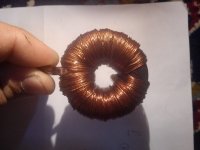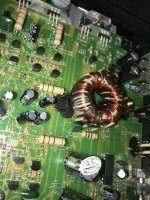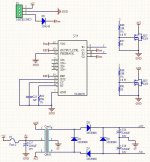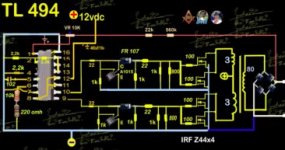noorworkshop
New member
Hi all
I made TL494 push pull Smps for car amp(No feedback)
my test amp is 100w.
i tested with AWG26 wire and output Dropped from 32 to 17 volt in 60% music volume
core information
pri:5+5 turns(17 Layer)
sec:13+13 turns(7 layer)
i Calculate for 200w smps power.(Double AMP power)
but there is a lot of voltage drop.
i try to use AWG18(~1mm wire) or Thicker wire for core of smps to have less layer but I do not know the current of any wire.
And how to avoid switching voltage drop
please help me
thanks
I made TL494 push pull Smps for car amp(No feedback)
my test amp is 100w.
i tested with AWG26 wire and output Dropped from 32 to 17 volt in 60% music volume
core information
pri:5+5 turns(17 Layer)
sec:13+13 turns(7 layer)
i Calculate for 200w smps power.(Double AMP power)
but there is a lot of voltage drop.
i try to use AWG18(~1mm wire) or Thicker wire for core of smps to have less layer but I do not know the current of any wire.
And how to avoid switching voltage drop
please help me
thanks
Last edited:




